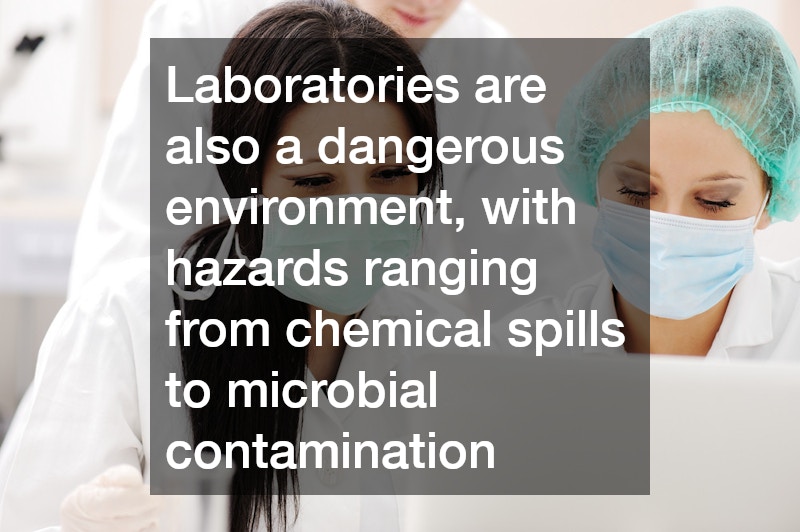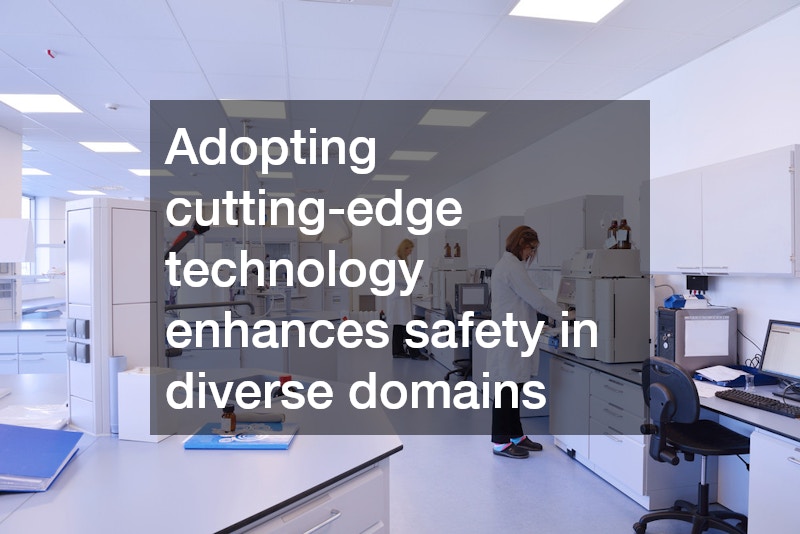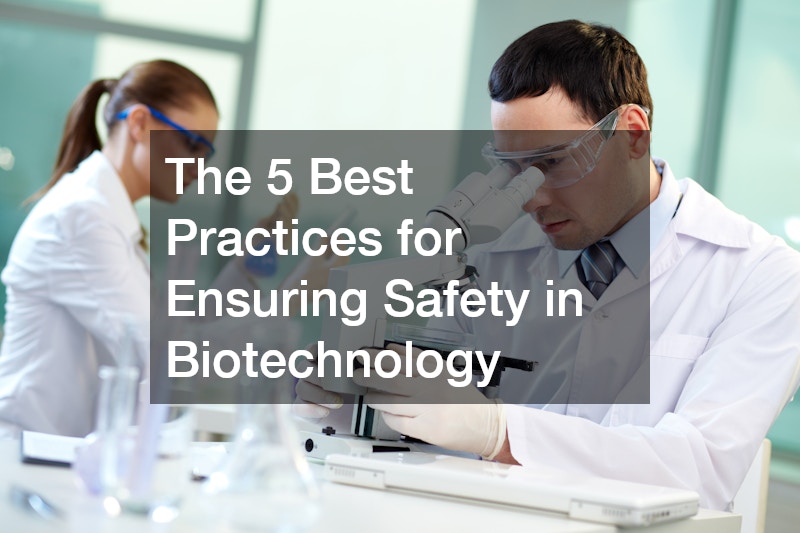The 5 Best Practices for Ensuring Safety in Biotechnological Processes
Biotechnology has the potential to revolutionize medicine, agriculture and industry. But, along with its many benefits, it is important to ensure safety in biotechnological processes. Understanding the processes that ensure safety is essential as you explore the complex world of biotechnology. Many measures exist to protect human health and the environmental, from meticulous laboratory protocols to strict regulatory frameworks.
1. Stringent Laboratory Safety Protocols

The laboratories are the epicenters for biotechnological innovations, where breakthrough discoveries are made and new solutions are developed. However, they are also a dangerous environment, with hazards ranging from chemical spills to microbial contamination. To reduce these risks, laboratory protocols must be strictly enforced.
Implementation of Biosafety Levels (BSLs)
Biosafety Levels (BSLs), a concept in laboratories, categorize the level of containment needed when handling biological agents that are hazardous. These levels range from BSL-1 (minimal risks) to BSL-4, (highest level containment), and dictate the protective measures that are required.
Adherence to Good Laboratory Practices (GLPs)
GLPs are the cornerstone of ensuring that data obtained in lab studies is reliable and accurate. GLPs reduce the possibility of errors by prescribing detailed guidelines for the conduct of experiments, documentation and quality assurance.
2. Rigorous Quality Control Measures
For product safety and effectiveness, biotechnology requires strict quality control. Every aspect of production is scrutinized, whether it’s biofuels, GMOs or pharmaceuticals.
Utilization of Advanced Analytical Techniques
Biomolecules can be precisely characterized and quantified using advanced analytical techniques such as high-performance liquid crystallography (HPLC), polymerase chain reactions (PCR), and mass spectrometry. Biotechnologists are able to accurately determine the purity, identity and potency of their products by leveraging these tools.
Implementation of Process Validation
Validating biotechnological process is a crucial step to ensure consistency and reliability. Biotechnologists are able to identify and correct potential deviations by systematically evaluating and verifying each stage of production.
3. Comprehensive Regulatory Oversight
Biotechnology is a rapidly growing field that requires a robust regulatory framework to protect the public and maintain safety standards. The regulatory bodies play a crucial role in scrutinizing the biotechnological process, from research and development through to commercialization.
Compliance With Good Manufacturing Practices (GMPs)
Good Manufacturing Practices (GMPs), which are a set of standards, define the requirements for the manufacturing, packaging, and distribution of biotechnological products. These guidelines ensure that products are consistent, pure, and safe. This boosts consumer confidence.
Adherence to Environmental Regulations
Biotechnological ventures often intersect environmental concerns and require compliance with strict regulations to minimize potential ecological risks. It is important to adhere to environmental regulations, whether the release of GMOs into the environment or disposal of hazardous waste.
4. Embracing Cutting-Edge Technologies

Biotechnology is driven by innovation, which drives progress and fosters transformative changes. Adopting cutting-edge technology not only increases efficiency and effectiveness but also enhances safety in diverse domains.
Integration of Automation and Robotics
Robotics and automation have revolutionized the biotechnological process, streamlining workflows while minimizing human errors. By delegating repetitive work to robotic systems, laboratories can reduce the risk of accidents and ensure precision during experimental procedures.
Adoption of Novel Purification Techniques
Purification is the key to biotechnological production. It allows for the isolation and refinement of biomolecules. Purification techniques such as reverse osmosis and chromatography offer unmatched efficiency and purity.
5. Proactive Management of Emerging Risks
For preemptive mitigation, biotechnology is a dynamic field. Vigilance toward emerging risks will be key. Proactive surveillance and risk assessment is essential for assessing the risks of unforeseen genetic modifications, as well as novel pathogens.
Continuous Monitoring and Surveillance
Biotechnologists can detect potential risks and take action before they become crises by using continuous monitoring and surveillance. Real-time surveillance is crucial to ensuring safety, whether it’s tracking the spread and monitoring of GM organisms within ecosystems or monitoring microbial contamination.
Implementation of Crisis Management Protocols
Even with the best precautions, biotechnological projects can still face crises. Implementing crisis management protocols in such situations is critical for orchestrating a response that is effective and minimizing adverse consequences. These protocols promote resilience and prepareness to ensure rapid containment and resolution.
The biotechnology industry is a source of hope that promises to revolutionize many aspects of human life. This transformative potential, however, must be balanced with a commitment to safety. We can navigate the complex landscape of biotechnology by adhering strictly to laboratory protocols, implementing robust measures for quality control, adopting innovative technologies and remaining vigilant about emerging risks. We can harness biotechnology’s limitless potential through collective diligence and foresight to create a healthier, safer and more sustainable world for future generations.

